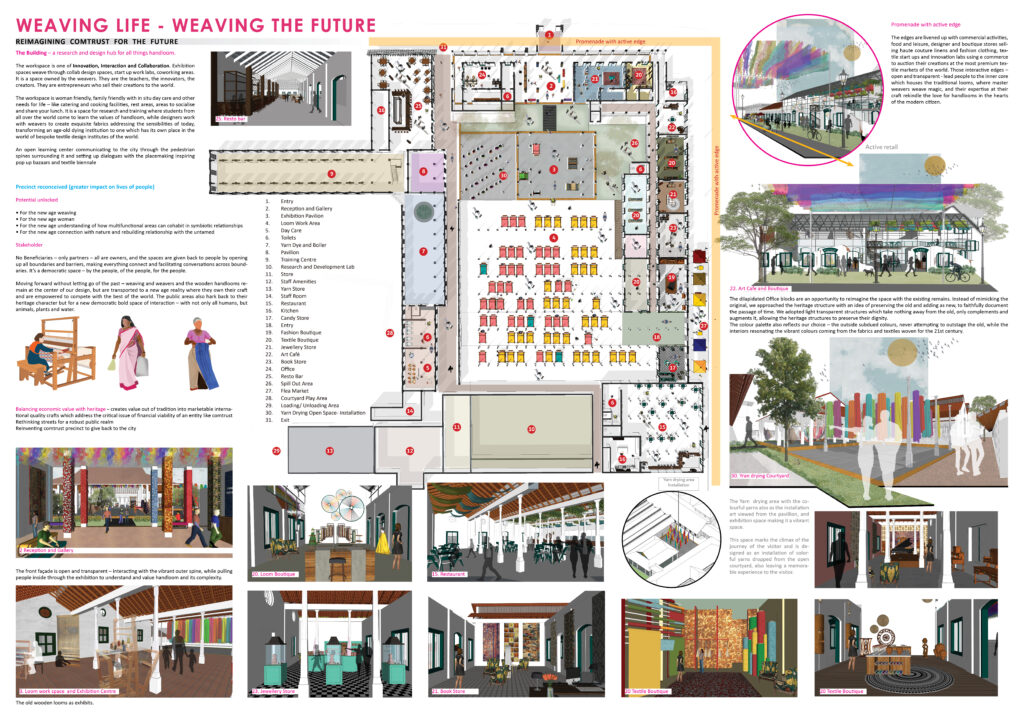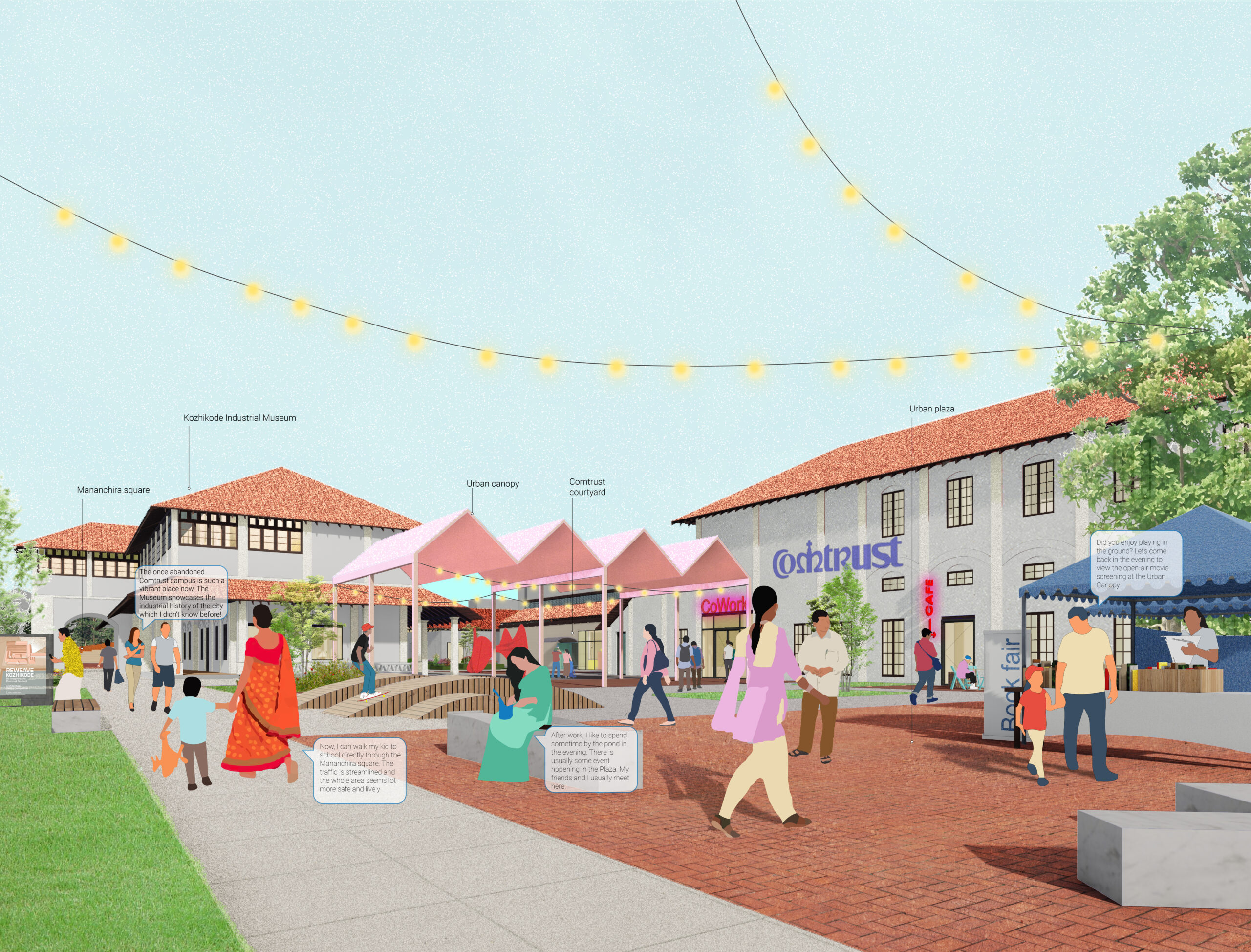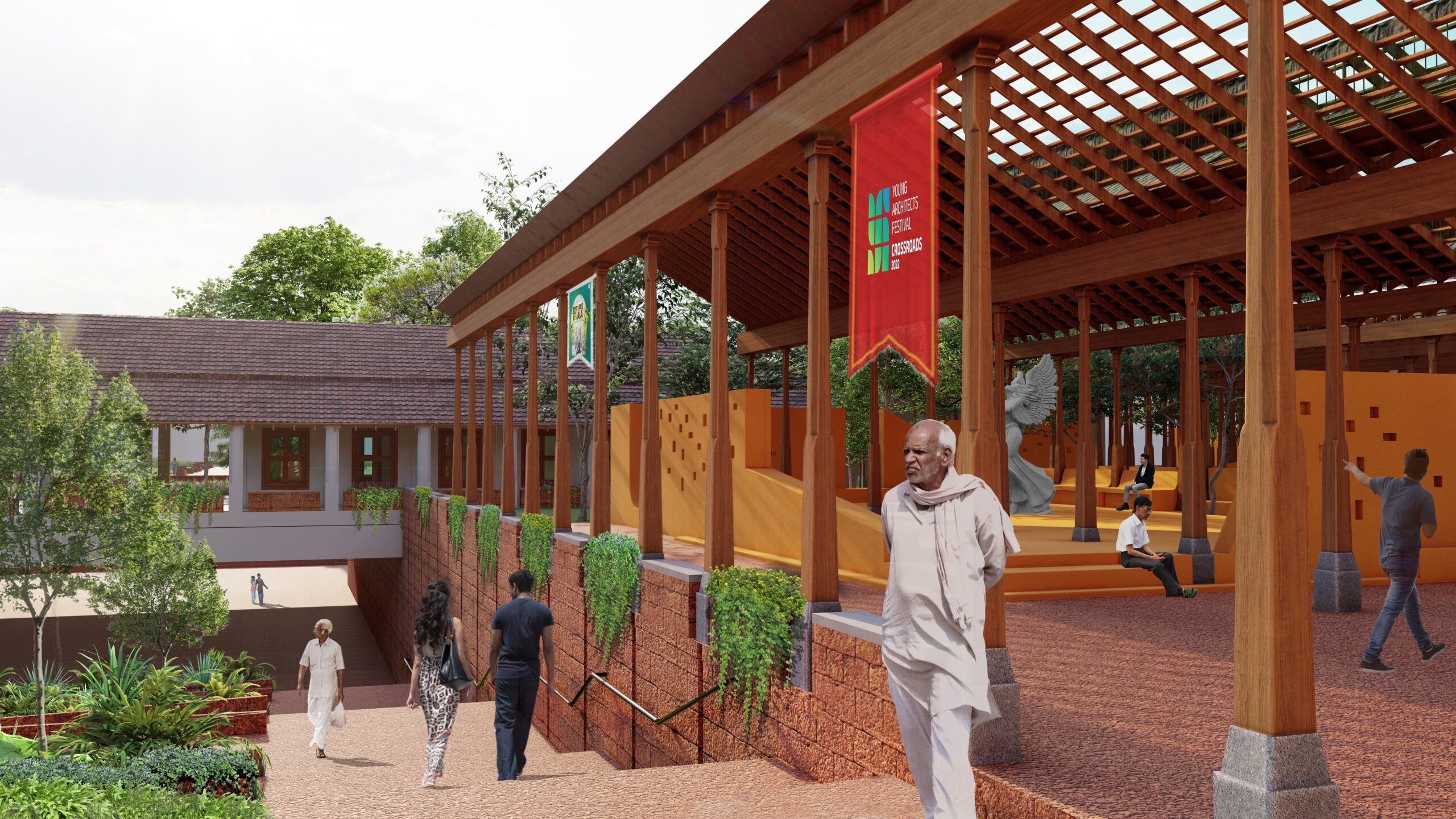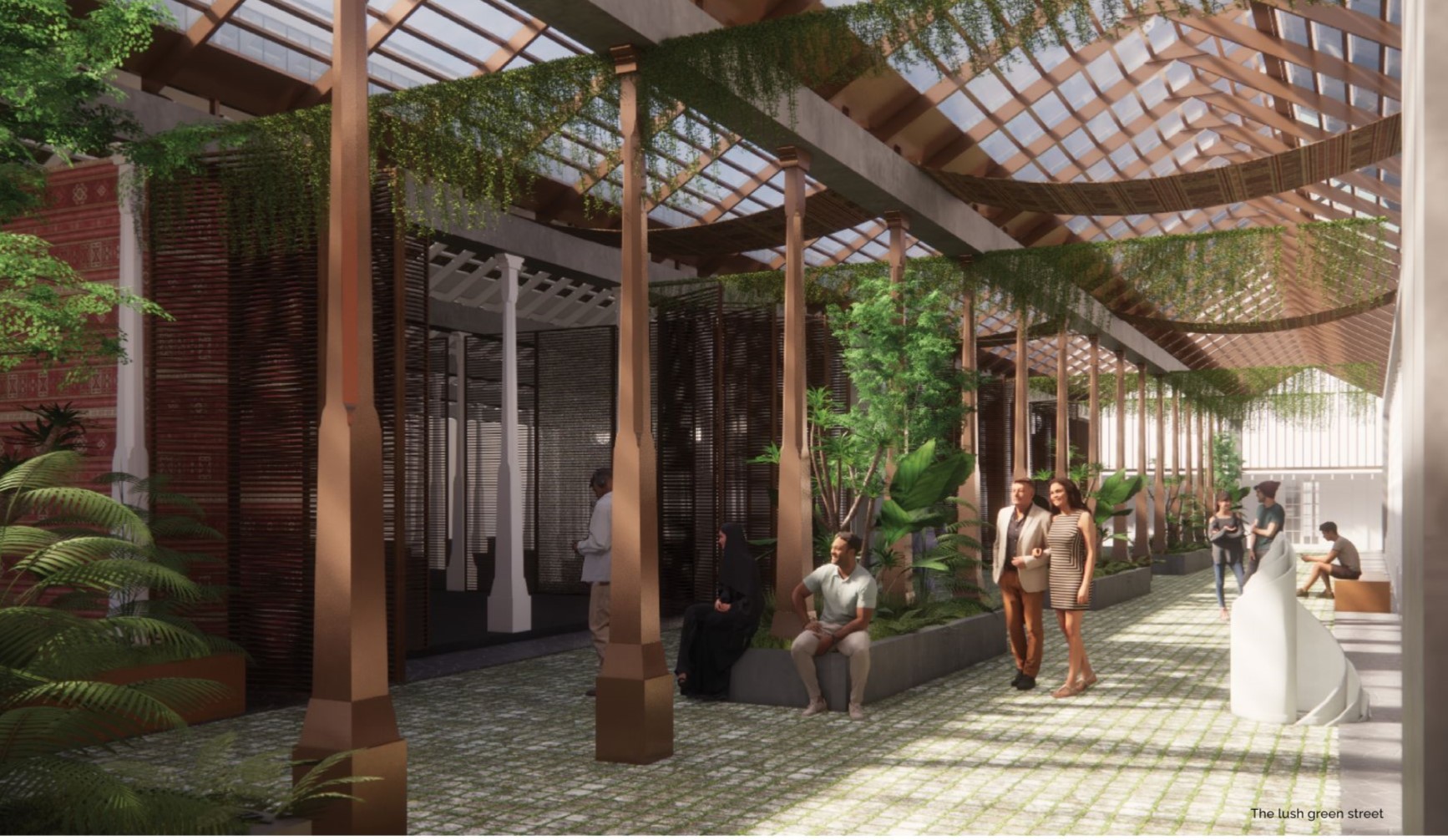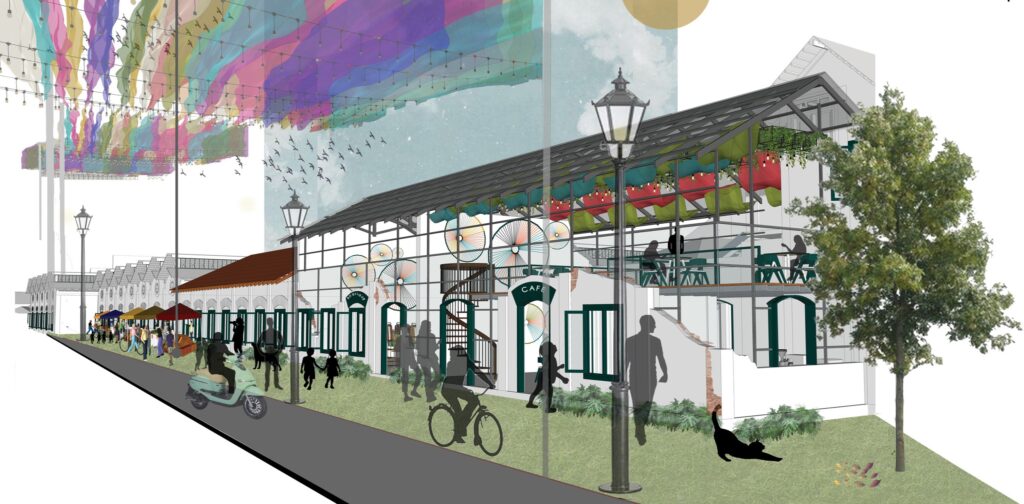
Design Combine’s Weaving Life – Weaving The Future was shortlisted in the Reweave Kozhikode Competition, held at YAF, by the IIA Calicut Centre.
Reimagining Comtrust for the Future.
The Comtrust precinct provides a unique challenge to the urban space designer with its history and tradition of weaving, challenged by the sustainability issues of handloom as an industry with a low-value product needing intensive labour inputs. The precinct has, over time, died – despite all the ingredients of a great public space – heritage buildings, a water edge and parks. The site today is fractured and disconnected, with barriers bifurcating space and creating endless pools of negative zones. The opaque street fronts of the decayed heritage structures also create dead pavements and street edges, with no activity taking place at most parts of the day. The public park is hugely underutilized and the constructed water pond is invisible to the streets surrounding it.
Our approach direction was thus clear and our principal objectives for the design concept became:
- Reimagining the function of the Comtrust building which addressed concerns of the dying handloom industry, the deprivation of the workers with their vestigial weaving skills.
- Removing barriers and connecting spaces to reconfigure spatial usage and ownership and restore the space back to Kozhikode in an intervention of public placemaking.
- Energising the space with an inclusive agenda of the democratic zone which can be owned by people who frequent the space.
- Create a connection between the disjointed nature and human activity in which parts of the precinct can allow a deep regeneration of natural wetlands and urban forests to address the microclimate of the busy city of Kozhikode, create a local impact in addressing groundwater recharge issues and the displacement of flora and fauna with rapid urbanization.
The design methodology we embraced was to:
- Reimagine the space as a design research and development institute and start-up lab for handloom textiles with a collaborative interface owned and operated by the weavers.
- Reconfigure an open learning centre communicating to the city through the pedestrian spines surrounding it and setting up dialogues with placemaking inspiring pop-up bazaars and textile biennales.
This essential address helps us imagine the handloom as a fabric of the future and the weavers as the custodians of this fabric. This takes the humble handloom to the international and global design platforms, reinvented as a fabric of the future and hands over the agency on their own lives – to monetise and enhance their skills ready to take over the global market. The weavers become stakeholders of their own future, and the precinct becomes a place to be for all handloom lovers, the world over.
To achieve this, our strategies were:
Maximizing Site Potential
- The precinct converted into a multi-dimensional multi-functional space housing an institute and start-up labs on one side, a vibrant inclusive public space, prioritizing inclusive pedestrian activity, and an urban constructed wetland and forest at its far edge.
- The space is for collaborative co-working – translating new-age technology-based work patterns onto weaving craft, involving on one hand the research and development for bespoke haute couture designer materials and on the other management training for startup businesses.
Value Add to the City
- Revives the inactive dead centre of the city by removing boundaries which divide.
- Makes places connect with each other and made accessible to all,
- Allows the creation of a vibrant public space/ park nurtured by an institutional space with an interactive commercial edge
Placemaking for a City Centre
- The building is imagined as one contributing to and generating the pedestrian public space around it
- The public space is a water edge development on one side and a park edge on the other
- The pedestrian spine is fully accessible.
A Catalyst for Transformation
- As most of the weavers were women, we prioritize women in our workspace design and imagine them as the leaders of this venture.
- The space is for the new-age Indian woman, coworking entrepreneurs with creative business models, supported through functional space design (childcare, kitchen utilities, housekeeping and catering) to address her domestic duties with effective economic ventures – addressing her time poverty by bringing everything to one space, cutting down her commute times for her essentials in life.
- The site builds in close proximity to fitness – an aspect missing from most Indian woman’s life due to their time poverty – through the accessible parks, child-friendly pedestrian zones and even jungle trails and treks for the more adventurous ones.
This approach serves in allowing the potential for the following to be unlocked:
- The new age weaving
- The new-age woman
- The new age understanding of how multifunctional areas can cohabit in symbiotic relationships
- The new age connection with nature and rebuilding relationship with the untamed
We visualize the place with all as partners, owners, and the spaces are given back to people by opening up all boundaries and barriers, making everything connect, and facilitating conversations across boundaries. It is a democratic space – by the people, of the people, for the people.
Moving forward without letting go of the past – weaving, weavers and wooden handlooms remain at the centre of our design but are transported to a new age reality where they own their craft and are empowered to compete with the best of the world. The public areas also hark back to their heritage character but for a new democratic bold space of interaction – with not only all humans, but animals, plants and water.
Balancing economic value with heritage – creates value out of tradition into marketable international quality crafts which address the critical issue of financial viability of an entity like Comtrust. Transparency and visual connections lead people across to each other to set up this communication between crafts and people, private and public, man and nature.
Thus, the space transforms handloom weaving into a new-age material meant for the greatest explorations of the newest ideas of design and making it into a high-value product for the international market.
Presentation Sheets


